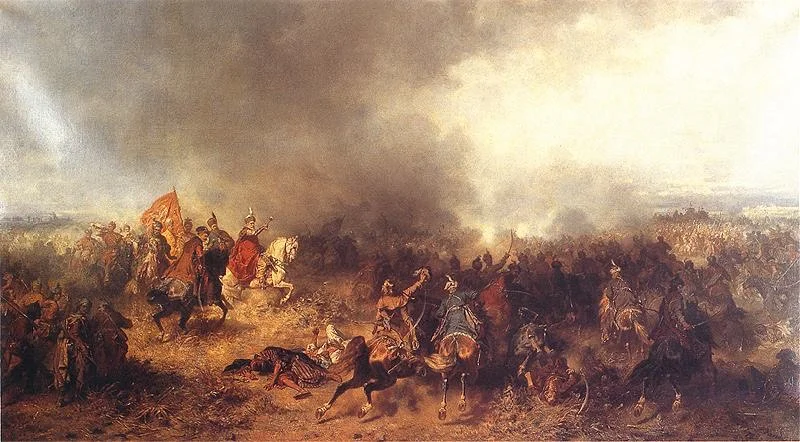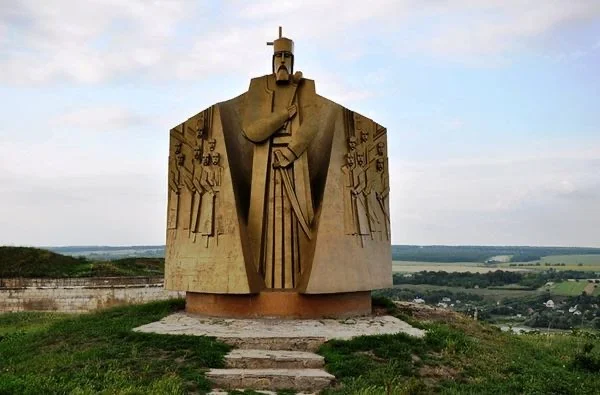The Khotyn Fortress – famous for its unique architecture and very long and dramatic history – is located at the southeastern end of the Dniester Canyon that runs meandering from northwest across the Chernivtsi region in the southwest of Ukraine. The 250-km-long Dniester Canyon rising 120 m above the river is the longest in Ukraine and one of the longest in Europe. Its walls reveal geological layers of the Devon era (ca 400 million years ago) with fossilized Paleozoic flora and fauna.
Right above the Dniester Canyon stands the Khotyn Fortress, a site listed among the Seven Wonders of Ukraine. Its history dates to the late 10th century when Kyiv Prince Volodymyr the Great built a fort on the Dniester bank as a defensive border outpost for his newly expanded state of Kyiv Rus. The fort that protected the small township of craftsmen and merchants and the ferry across the Dniester was soon rebuilt into a stone fortress.
JOIN US ON TELEGRAM
Follow our coverage of the war on the @Kyivpost_official.
The name “Khotyn” is believed to have been derived from the past participle of the Ukrainian verb khotity (want) as very many wanted to seize the prospering town that stood at a junction of important trade routes.
The fortress was leveled, burned down and rebuilt several times until the 1250s when it underwent a major reconstruction by Prince Danylo of Halych and his son Lev (the Ukrainian for Lion). It was in his son’s honor that Danylo named the city he had founded: Lviv is the possessive case of Lev, meaning “Lev’s Town.”
Danylo and Lev completely rebuilt the fortress and surrounded it with a seven-meter-tall stone wall and a 6-meter-wide moat. They also built new ramparts and other fortifications in the northern section. Remnants of that wall can still be seen in the East Wall that joins the North Tower of the Castle. The castle with two palaces and a chapel was built in the mid-15th century by the Moldovan ruler Stephan the Great.
The Khotyn Fortress was the site of the great battle of 1621 which, without exaggeration, decided Europe’s fate. It was where the allied army of 40,000 Ukrainian Cossacks led by Hetman Petro Konashevych-Sahaidachny and 35,000 Poles led by Jan Karol Chodkiewicz clashed with the allied army of Turks and Tatars that numbered respectively 250,000 and 4,000 attackers.
The Ottoman forces would have surely crushed the Polish defenders of the fortress, had the Cossacks been only an hour late to break through the enemy’s rear lines. In that breakthrough Sahaidachny was badly wounded, but still able to command his army.
 Kyiv painter Andriy Serebriakov's Hetman Sahaidachny in Khotyn Battle of 1621 depicts the decisive episode in the victorious battle.
Kyiv painter Andriy Serebriakov's Hetman Sahaidachny in Khotyn Battle of 1621 depicts the decisive episode in the victorious battle.
The battle at the Khotyn walls raged for five weeks and nearly halved both armies. Finally, seeing that the defense was unbreakable, the Ottoman horde retreated to the Danube and signed a peace treaty with the Polish king.
And even though the treaty left Khotyn under Turkish rule and did not satisfy all the Cossacks’ demands, historians are unanimous that the battle of Khotyn stopped the Ottoman expansion and saved Europe from Turkish domination.
Monument to Hetman Petro Konashevych-Sahaidachny near Khotyn Fortress.
During the 17th century, the Cossacks seized the Khotyn fortress several times and stayed there the longest from 1650 to 1653. In 1673, the 30,000-strong allied Cossack-Polish army again defeated the outnumbering Turks, and the ancient Christian town was able to breathe freely for the next several decades.
Those were the most tragic and glorious pages in the history of the town and its fortress.
After Ukrainian history turned the Cossack page over in the second decade of the 18th century, Khotyn eventually fell under Turkish rule.
With the help of French engineers, the Turks built strong bastions and other fortifications on the neighboring hills to withstand the then new type of weaponry – long-range artillery. Yet they were not strong enough to stop the Russian army in 1739.
Then the fortress changed hands for decades until 1806 when it finally became a Russian outpost at the Romanian border and the town of Khotyn became a district center of Russia’s Bessarabia province.
After that, the fortress never more served military purposes while the town of Khotyn gradually grew in area and population which reached 18,000 by the turn of the 20th century.
In 1919, Khotyn was the epicenter of an anti-Romanian uprising of Ukrainian peasants who took over about a hundred villages in the district. After ten days of fighting, Romanian troops defeated the Ukrainian rebels.
Almost all of them were executed in the courtyard of the Khotyn Fortress, and North Bessarabia became Romanian for 21 years, until Stalin annexed the province in 1940. Now a monument to Heroes of the Khotyn Uprising stands in the center of the town.
It is one of the numerous interesting sites that have attracted tourists from all over Ukraine and abroad. Even these days, during the war, the Khotyn Fortress national preserve is open to visitors.
You can also highlight the text and press Ctrl + Enter




